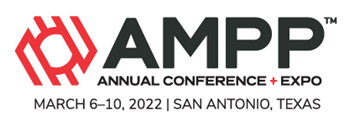Search
Products tagged with 'water'
View as
Sort by
Display
per page
00047 CO2-CORROSION AND WATER DISTRIBUTION TWO PHASE PIPE FLOW OF HYDROCARBON LIQUID AND WATER
Product Number:
51300-00047-SG
ISBN:
00047 2000 CP
Publication Date:
2003
$20.00
98417 TITANIUM AS REACTOR MATERIAL FOR SCWO APPLICATIONS.FIRST EXPERIMENTAL RESULTS
Product Number:
51300-98417-SG
ISBN:
98417 1998 CP
Publication Date:
1998
$20.00
Ammonia Stress Corrosion Cracking of Admiralty Brass Heat Exchanger Tubes in Refinery Cooling Water System
Product Number:
51324-20970-SG
Publication Date:
2024
$40.00
Case Studies on Application of Indirect Inspection Technology and Methodology in Municipal Water and Wastewater Systems
Product Number:
51324-21056-SG
Publication Date:
2024
$40.00
Cathodic Protection Monitoring In Water And Wastewater Systems
Product Number:
51322-17655-SG
Publication Date:
2022
$20.00
Corrosion Assessment and Repair for Aging Concrete Infrastructure
Product Number:
51324-20860-SG
Publication Date:
2024
$40.00
Effect of TEG in Corrosion Behavior of Carbon Steel Pipelines in CCS Environments
Product Number:
51324-20648-SG
Publication Date:
2024
$40.00
NACE Publication 11114-2014-SG, "A State-of-the-Art Report on the Internal Corrosion of Residential Water Heating Systems"
Product Number:
24257-SG
Publication Date:
2014
$109.00
NACE Publication 7H100-2011-SG, “Evaluation of Boiler Tube Deposit Mass Loading (Deposit Weight Density) Methodology"
Product Number:
24206-SG
ISBN:
7H100
Publication Date:
2011
$109.00
NACE SP0188-2006 (formerly RP0188), Discontinuity (Holiday) Testing of New Protective Coatings on Conductive Substrates
Product Number:
21038-SG
Publication Date:
2006
$179.00
Proposal of a New Corrosion Index for Domestic Tap Water In Japan
Product Number:
51323-19056-SG
Publication Date:
2023
$20.00
RP0278-HD1986-SG Design and Operation of Stripping Columns for Removal of Oxygen from Water
Product Number:
21023-HD1986
Publication Date:
1986
$179.00
- 1
- 2












